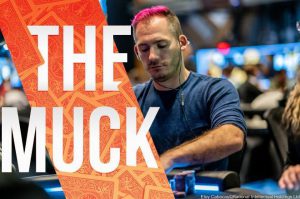In the preflop, even novice players know to rake with A-A and K-K. At micro-limits, it is best to maintain that line at all times. Regulators may go from boosting premium hands to using Flat Call at greater stakes.
In poker, a Flat Call is to match your best hands to your opponent’s best raiser cards. In this page, you’ll get table-specific examples and advice for using the strategy.
The Poker Sense of the Term “Flat Call”
Flat Call is a preflop equalizer with a hand that is usually better suited for a raid. Flat Call means “flat response,” and the muv is a kind of slopplay in which the player intentionally misrepresents the strength of his or her pocket cards.
Expert players know to only utilize the Call button when they have a pair of queens or above, whereas newer players will press it with any two cards.
Bet Calling Etiquette
A flat call in poker is a complex strategy that should be handled with care. It’s important to consider both the specifics of the present hand and the history of prior hands while deciding whether or not to flop.
Pro
Disagreeing with.
To be in a late position or to be in the blinds.
Position either early or midway.
Reduced stack
Long odds
Behind-the-scenes squealer
The flip might produce a multi-pot.
Bad guys that attack with Luz
Inactive players on the blinds
Playing passively in the preflop with a top hand is appropriate when there is a fear that a bust will knock opponents out of the hand, making the flat call a trap for opponents. This move leaves players with the worst hands in the hand, equalizing in the expectation that players will continue to bet on the preflop or subsequent streets, yielding equity to the contestant.
Nevertheless, the muv is unsuccessful at low and micro-limit tables because to the abundance of inexperienced players who are willing to call massive raises with practically any card and drag weak hands to showdown.
What the player must focus on
Several considerations should be taken into account when deciding whether to play aggressively or passively with high-value cards:
Weak cards are useful against overly loose poker players, and a hand may be classified as a flop if your opponents are bidding with the lowest cards, such as Q-Q, K-K, A-A, or A-K.
A call with weak hands is typically justifiable, but not a flip, so it’s important to consider your opponent’s range before making a decision.
Since most raises in the latter stages of a tournament indicate a player’s desire to stake all of their chips, the stack-move is often utilized during this time.
If your opponent folds to a 3-bet regularly, you should attempt calling to add additional chips to the pot, but if they are prepared to pay any price to see the flip, you should consider raising instead of calling.
Top hands lose a lot of equity on the flop in a multipot, so if you want to play passively and not give up your edge, you need to make sure the following street is heads-up. If you have many opponents, you should strive to build the pot as much as possible preflop.
Players that like to squeeze from late positions and blinds may be beaten with this strategy, since a flat in front of them is sometimes more successful than a 3-bet on the welsh.
It is crucial to strike a balance in the game to make your cards less evident to your opponents, in addition to the intricacies stated above. A strong opponent may begin exploiting frequent flats.
Game Scenarios, for Exemplification
Taking advantage of a player’s predisposition for a wide-ranging opening and repeated continuation bets might lead to significant profits.
If your opponent often raises from the small blind but frequently fouls on resteals and frequently counterbets on the flop and turn, the logical course of action is to play passively. A 3-bet in this circumstance will only net you the sum of the open-raise and the large blind.
Another common use for the flush is to set up an opponent for a squeeze. Here, the BTN player has been dealt AA, the CO is making a raid, and the BB is a poker player who is prone to squeeze.
Squeeze may be called or raised, but it’s vital to avoid multipot on the flip. A 3-bet can eliminate both opponents from the hand, while a call would prompt the large blind to raise. The final option in this situation will yield greater equity.





